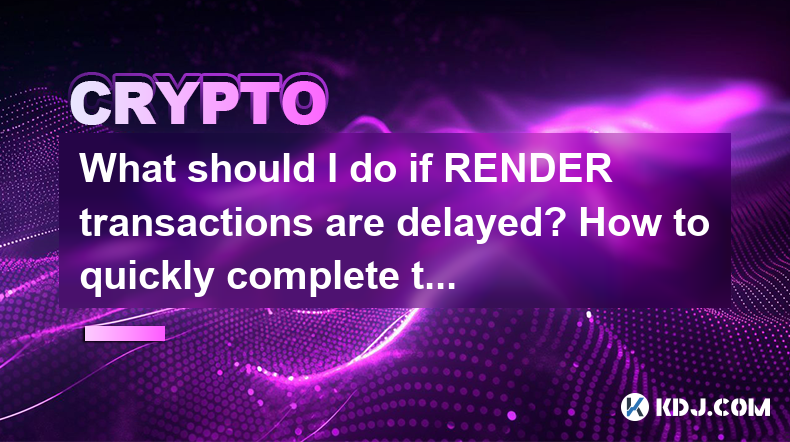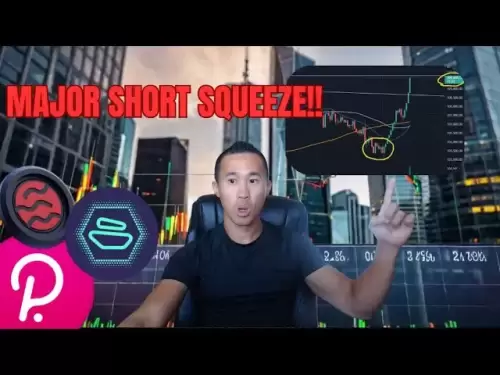-
 Bitcoin
Bitcoin $108,270.9768
2.07% -
 Ethereum
Ethereum $2,489.8066
2.50% -
 Tether USDt
Tether USDt $1.0004
0.01% -
 XRP
XRP $2.2035
0.66% -
 BNB
BNB $661.6608
2.32% -
 Solana
Solana $150.6425
2.13% -
 USDC
USDC $0.9999
-0.01% -
 TRON
TRON $0.2810
0.90% -
 Dogecoin
Dogecoin $0.1645
3.05% -
 Cardano
Cardano $0.5743
4.91% -
 Hyperliquid
Hyperliquid $38.8419
-0.15% -
 Bitcoin Cash
Bitcoin Cash $504.3134
-2.64% -
 Sui
Sui $2.8096
4.35% -
 Chainlink
Chainlink $13.3095
2.21% -
 UNUS SED LEO
UNUS SED LEO $8.9469
0.33% -
 Avalanche
Avalanche $17.9231
3.93% -
 Stellar
Stellar $0.2340
0.74% -
 Toncoin
Toncoin $2.8458
3.21% -
 Shiba Inu
Shiba Inu $0.0...01158
3.47% -
 Litecoin
Litecoin $86.0738
1.94% -
 Hedera
Hedera $0.1507
2.99% -
 Monero
Monero $319.8544
2.31% -
 Polkadot
Polkadot $3.4081
1.95% -
 Dai
Dai $1.0000
0.01% -
 Bitget Token
Bitget Token $4.5645
0.91% -
 Ethena USDe
Ethena USDe $1.0002
0.00% -
 Uniswap
Uniswap $7.2959
5.27% -
 Aave
Aave $272.4623
2.90% -
 Pepe
Pepe $0.0...09680
2.96% -
 Pi
Pi $0.4955
0.78%
What should I do if RENDER transactions are delayed? How to quickly complete transactions when the network is congested?
To expedite delayed RENDER transactions during network congestion, increase transaction fees, use accelerators, switch networks, or utilize advanced hardware wallet features.
May 02, 2025 at 04:28 pm

If you are experiencing delayed RENDER transactions and need to complete transactions quickly during network congestion, there are several strategies and steps you can follow to improve your situation. This article will guide you through the process of handling delayed RENDER transactions and provide detailed instructions on how to expedite your transactions when the network is congested.
Understanding RENDER Transaction Delays
RENDER transactions can experience delays due to various reasons, including high network congestion, low transaction fees, and issues with the blockchain itself. When the network is congested, the sheer volume of transactions waiting to be processed can lead to significant delays. Understanding the root cause of these delays is crucial for finding the appropriate solution.
Checking Transaction Status
Before taking any action, it's important to check the current status of your RENDER transaction. You can do this by following these steps:
- Visit a blockchain explorer: Use a reputable blockchain explorer that supports RENDER transactions, such as Etherscan or BscScan.
- Enter your transaction hash: Find the transaction hash (TXID) in your wallet and enter it into the search bar of the blockchain explorer.
- Review the transaction details: Look at the status of your transaction. If it's still pending, you can see how long it has been in the mempool.
Adjusting Transaction Fees
One of the most effective ways to expedite your RENDER transactions during network congestion is to adjust the transaction fees. Higher fees can incentivize miners to prioritize your transaction. Here's how you can do it:
- Open your wallet: Access the wallet from which you sent the RENDER transaction.
- Locate the transaction: Find the transaction you wish to expedite.
- Increase the fee: If your wallet supports it, you can increase the fee for the transaction. This process is often called a 'fee bump.'
- Confirm the new fee: Confirm the new fee and submit the transaction again with the higher fee.
Using a Transaction Accelerator
Some blockchains and services offer transaction accelerators that can help expedite your RENDER transactions. Here's how you can use them:
- Identify a transaction accelerator: Look for a reputable service that offers transaction acceleration for RENDER transactions. Some popular options include ViaBTC and BTC.com.
- Submit your transaction hash: Enter your transaction hash into the accelerator's interface.
- Pay the acceleration fee: Most accelerators require a fee for their service. Ensure you understand the cost before proceeding.
- Monitor the transaction: After submitting your transaction to the accelerator, monitor its status using a blockchain explorer.
Switching to a Different Network
If RENDER transactions are consistently delayed due to network congestion, you might consider switching to a different network that supports RENDER but experiences less congestion. Here's how you can do it:
- Research alternative networks: Look for networks that support RENDER and have lower transaction volumes. For example, if you're using the Ethereum network, you might consider switching to a layer-2 solution like Polygon.
- Set up a new wallet: Create a new wallet that supports the alternative network.
- Transfer your RENDER: Send your RENDER tokens to the new wallet on the less congested network.
- Conduct your transactions: Use the new network to conduct your RENDER transactions, which should be faster due to lower congestion.
Using a Hardware Wallet with Advanced Features
Some hardware wallets offer advanced features that can help manage transaction delays. Here's how you can utilize these features:
- Choose a compatible hardware wallet: Select a hardware wallet that supports RENDER and offers advanced transaction management features, such as the Ledger or Trezor.
- Set up the wallet: Follow the manufacturer's instructions to set up your hardware wallet and connect it to your computer or mobile device.
- Configure transaction settings: Use the wallet's interface to configure transaction settings, such as setting custom fees or using Replace-By-Fee (RBF) functionality.
- Submit the transaction: Send your RENDER transaction with the adjusted settings, which can help expedite processing during network congestion.
Frequently Asked Questions
Q: Can I cancel a delayed RENDER transaction?
A: Depending on the wallet and the blockchain you are using, you may be able to cancel a delayed RENDER transaction. Some wallets allow you to replace the transaction with a new one that has a higher fee, effectively canceling the original. Check your wallet's documentation to see if this option is available.
Q: How long should I wait before taking action on a delayed RENDER transaction?
A: The waiting time can vary depending on the network's congestion level. As a general rule, if your transaction has been pending for more than an hour, you might consider taking action to expedite it. Always monitor the transaction's status using a blockchain explorer.
Q: Are there any risks associated with using transaction accelerators?
A: Yes, there are risks involved. Transaction accelerators may charge a fee for their service, and there is no guarantee that they will successfully expedite your transaction. Additionally, using an accelerator may expose your transaction details to a third party, so ensure you use a reputable service.
Q: Can I switch back to the original network after moving my RENDER tokens to a less congested one?
A: Yes, you can switch back to the original network if needed. You will need to transfer your RENDER tokens back to a wallet on the original network. Be aware that you may incur additional transaction fees and potential delays during this process.
Disclaimer:info@kdj.com
The information provided is not trading advice. kdj.com does not assume any responsibility for any investments made based on the information provided in this article. Cryptocurrencies are highly volatile and it is highly recommended that you invest with caution after thorough research!
If you believe that the content used on this website infringes your copyright, please contact us immediately (info@kdj.com) and we will delete it promptly.
- Mormon Gold, Rare Coins, and Heritage Auctions: A Collector's Bonanza
- 2025-07-03 02:30:12
- Crypto News Flash: Real-Time Bitcoin Intelligence and XRP's Price Dip
- 2025-07-03 02:35:12
- Whale Supply Dwindles: What It Means for Bitcoin Investors
- 2025-07-03 01:10:12
- Altcoins to Watch: BDAG, APT, and DOT Lead the Charge in the Next Bull Run
- 2025-07-03 01:10:12
- AI Alliance Ignites: FET Price Rally on Horizon as Volatility Hits Rock Bottom
- 2025-07-03 01:50:12
- BONK Price Surge, Dogecoin Patterns, and BlockDAG's Double Up Offer: What's the Buzz?
- 2025-07-03 01:50:12
Related knowledge

How to customize USDT TRC20 mining fees? Flexible adjustment tutorial
Jun 13,2025 at 01:42am
Understanding USDT TRC20 Mining FeesMining fees on the TRON (TRC20) network are essential for processing transactions. Unlike Bitcoin or Ethereum, where miners directly validate transactions, TRON uses a delegated proof-of-stake (DPoS) mechanism. However, users still need to pay bandwidth and energy fees, which are collectively referred to as 'mining fe...

USDT TRC20 transaction is stuck? Solution summary
Jun 14,2025 at 11:15pm
Understanding USDT TRC20 TransactionsWhen users mention that a USDT TRC20 transaction is stuck, they typically refer to a situation where the transfer of Tether (USDT) on the TRON blockchain has not been confirmed for an extended period. This issue may arise due to various reasons such as network congestion, insufficient transaction fees, or wallet-rela...

How to cancel USDT TRC20 unconfirmed transactions? Operation guide
Jun 13,2025 at 11:01pm
Understanding USDT TRC20 Unconfirmed TransactionsWhen dealing with USDT TRC20 transactions, it’s crucial to understand what an unconfirmed transaction means. An unconfirmed transaction is one that has been broadcasted to the blockchain network but hasn’t yet been included in a block. This typically occurs due to low transaction fees or network congestio...

How to check USDT TRC20 balance? Introduction to multiple query methods
Jun 21,2025 at 02:42am
Understanding USDT TRC20 and Its ImportanceUSDT (Tether) is one of the most widely used stablecoins in the cryptocurrency market. It exists on multiple blockchain networks, including TRC20, which operates on the Tron (TRX) network. Checking your USDT TRC20 balance accurately is crucial for users who hold or transact with this asset. Whether you're sendi...

What to do if USDT TRC20 transfers are congested? Speed up trading skills
Jun 13,2025 at 09:56am
Understanding USDT TRC20 Transfer CongestionWhen transferring USDT TRC20, users may occasionally experience delays or congestion. This typically occurs due to network overload on the TRON blockchain, which hosts the TRC20 version of Tether. Unlike the ERC20 variant (which runs on Ethereum), TRC20 transactions are generally faster and cheaper, but during...

The relationship between USDT TRC20 and TRON chain: technical background analysis
Jun 12,2025 at 01:28pm
What is USDT TRC20?USDT TRC20 refers to the Tether (USDT) token issued on the TRON blockchain using the TRC-20 standard. Unlike the more commonly known ERC-20 version of USDT (which runs on Ethereum), the TRC-20 variant leverages the TRON network's infrastructure for faster and cheaper transactions. The emergence of this version came as part of Tether’s...

How to customize USDT TRC20 mining fees? Flexible adjustment tutorial
Jun 13,2025 at 01:42am
Understanding USDT TRC20 Mining FeesMining fees on the TRON (TRC20) network are essential for processing transactions. Unlike Bitcoin or Ethereum, where miners directly validate transactions, TRON uses a delegated proof-of-stake (DPoS) mechanism. However, users still need to pay bandwidth and energy fees, which are collectively referred to as 'mining fe...

USDT TRC20 transaction is stuck? Solution summary
Jun 14,2025 at 11:15pm
Understanding USDT TRC20 TransactionsWhen users mention that a USDT TRC20 transaction is stuck, they typically refer to a situation where the transfer of Tether (USDT) on the TRON blockchain has not been confirmed for an extended period. This issue may arise due to various reasons such as network congestion, insufficient transaction fees, or wallet-rela...

How to cancel USDT TRC20 unconfirmed transactions? Operation guide
Jun 13,2025 at 11:01pm
Understanding USDT TRC20 Unconfirmed TransactionsWhen dealing with USDT TRC20 transactions, it’s crucial to understand what an unconfirmed transaction means. An unconfirmed transaction is one that has been broadcasted to the blockchain network but hasn’t yet been included in a block. This typically occurs due to low transaction fees or network congestio...

How to check USDT TRC20 balance? Introduction to multiple query methods
Jun 21,2025 at 02:42am
Understanding USDT TRC20 and Its ImportanceUSDT (Tether) is one of the most widely used stablecoins in the cryptocurrency market. It exists on multiple blockchain networks, including TRC20, which operates on the Tron (TRX) network. Checking your USDT TRC20 balance accurately is crucial for users who hold or transact with this asset. Whether you're sendi...

What to do if USDT TRC20 transfers are congested? Speed up trading skills
Jun 13,2025 at 09:56am
Understanding USDT TRC20 Transfer CongestionWhen transferring USDT TRC20, users may occasionally experience delays or congestion. This typically occurs due to network overload on the TRON blockchain, which hosts the TRC20 version of Tether. Unlike the ERC20 variant (which runs on Ethereum), TRC20 transactions are generally faster and cheaper, but during...

The relationship between USDT TRC20 and TRON chain: technical background analysis
Jun 12,2025 at 01:28pm
What is USDT TRC20?USDT TRC20 refers to the Tether (USDT) token issued on the TRON blockchain using the TRC-20 standard. Unlike the more commonly known ERC-20 version of USDT (which runs on Ethereum), the TRC-20 variant leverages the TRON network's infrastructure for faster and cheaper transactions. The emergence of this version came as part of Tether’s...
See all articles

























































































